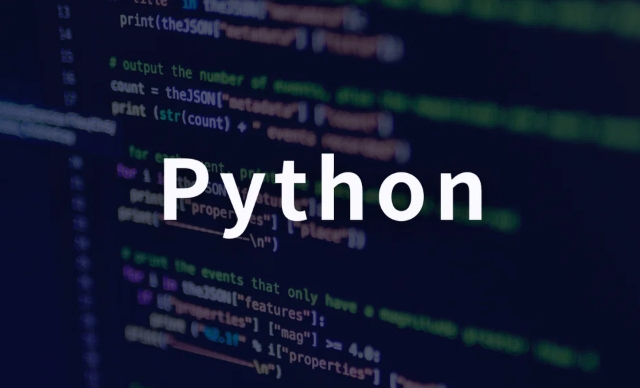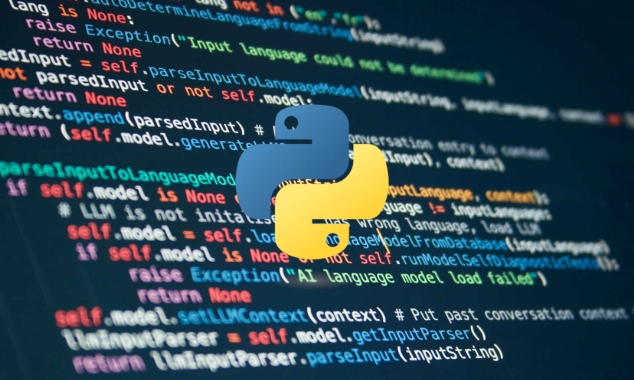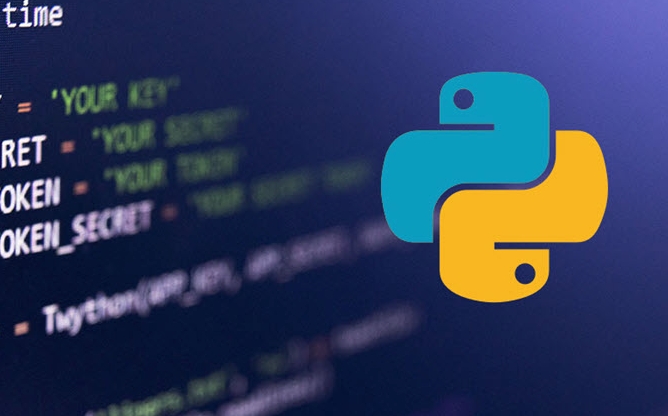 Backend Development
Backend Development
 Python Tutorial
Python Tutorial
 What is a forward reference in Python type hints for classes?
What is a forward reference in Python type hints for classes?
What is a forward reference in Python type hints for classes?
Jul 09, 2025 am 01:46 AMForward references in Python allow referencing classes that are not yet defined by using quoted type names. They solve the issue of mutual class references like User and Profile where one class is not yet defined when referenced. By enclosing the class name in quotes (e.g., 'Profile'), Python delays resolving the reference until it's needed. This technique should only be used when necessary, such as in circular dependencies, and can also be applied in function signatures. Starting from Python 3.11 or with from __future__ import annotations, quotes are unnecessary. Common mistakes include typos in quoted names, overuse, and not defining the referenced class later. Using tools like mypy helps ensure correctness.

When you're working with type hints in Python, especially when dealing with classes that reference each other, you might run into a problem: one class refers to another that hasn't been defined yet. That's where a forward reference comes in.

A forward reference is basically a way to tell Python, "This type will exist later, so don’t worry about it right now." You do this by putting the type name in quotes, like 'ClassName', instead of using it directly.
Why you need forward references
Let’s say you have two classes that refer to each other — for example, User and Profile. In Python, code runs top to bottom. So if User has a field that refers to Profile, and Profile also has a field that refers back to User, you’ll hit an error if you try to use the class name directly before it's defined.

Here’s what that looks like without quotes (and would cause a NameError):
class User:
profile: Profile # Error! Profile isn't defined yet
class Profile:
user: UserBy using a string instead, like 'Profile', you avoid that issue:

class User:
profile: 'Profile' # This works!
class Profile:
user: UserPython understands that 'Profile' is a type that will be defined later.
How to use them correctly
Using forward references is straightforward — just wrap the class name in quotes. But there are a few things to keep in mind:
- Only use them when necessary, like when two classes depend on each other.
- If the class is already defined above, no need for quotes.
- They work not just in class attributes, but also in function signatures and return types.
Examples:
def get_user() -> 'User':
...
class User:
friend: 'User' # Refers to same classAlso, starting from Python 3.11 (or using from __future__ import annotations in Python 3.7 ), you can skip the quotes entirely because annotations are automatically treated as forward references. But if you’re supporting older versions or writing code that needs to run across multiple Python versions, using quotes is still safer.
Common mistakes and how to avoid them
Sometimes people forget that forward references are only placeholders. Here are a few gotchas:
- ? Using invalid class names inside quotes — Python won't catch typos until runtime.
- ? Forgetting to define the actual class later — your code will crash when it tries to resolve the reference.
- ? Overusing them even when the class is already defined — it's unnecessary and can confuse readers.
If you're using tools like mypy or Pyright for static typing, they usually handle quoted references well, but it’s good to test with your own setup.
So, to sum up:
- Use
'ClassName'when a class hasn't been defined yet - Don’t quote class names once both are defined in the right order
- Know your Python version and tooling support
基本上就這些。
The above is the detailed content of What is a forward reference in Python type hints for classes?. For more information, please follow other related articles on the PHP Chinese website!

Hot AI Tools

Undress AI Tool
Undress images for free

Undresser.AI Undress
AI-powered app for creating realistic nude photos

AI Clothes Remover
Online AI tool for removing clothes from photos.

Clothoff.io
AI clothes remover

Video Face Swap
Swap faces in any video effortlessly with our completely free AI face swap tool!

Hot Article

Hot Tools

Notepad++7.3.1
Easy-to-use and free code editor

SublimeText3 Chinese version
Chinese version, very easy to use

Zend Studio 13.0.1
Powerful PHP integrated development environment

Dreamweaver CS6
Visual web development tools

SublimeText3 Mac version
God-level code editing software (SublimeText3)
 PHP calls AI intelligent voice assistant PHP voice interaction system construction
Jul 25, 2025 pm 08:45 PM
PHP calls AI intelligent voice assistant PHP voice interaction system construction
Jul 25, 2025 pm 08:45 PM
User voice input is captured and sent to the PHP backend through the MediaRecorder API of the front-end JavaScript; 2. PHP saves the audio as a temporary file and calls STTAPI (such as Google or Baidu voice recognition) to convert it into text; 3. PHP sends the text to an AI service (such as OpenAIGPT) to obtain intelligent reply; 4. PHP then calls TTSAPI (such as Baidu or Google voice synthesis) to convert the reply to a voice file; 5. PHP streams the voice file back to the front-end to play, completing interaction. The entire process is dominated by PHP to ensure seamless connection between all links.
 How to use PHP combined with AI to achieve text error correction PHP syntax detection and optimization
Jul 25, 2025 pm 08:57 PM
How to use PHP combined with AI to achieve text error correction PHP syntax detection and optimization
Jul 25, 2025 pm 08:57 PM
To realize text error correction and syntax optimization with AI, you need to follow the following steps: 1. Select a suitable AI model or API, such as Baidu, Tencent API or open source NLP library; 2. Call the API through PHP's curl or Guzzle and process the return results; 3. Display error correction information in the application and allow users to choose whether to adopt it; 4. Use php-l and PHP_CodeSniffer for syntax detection and code optimization; 5. Continuously collect feedback and update the model or rules to improve the effect. When choosing AIAPI, focus on evaluating accuracy, response speed, price and support for PHP. Code optimization should follow PSR specifications, use cache reasonably, avoid circular queries, review code regularly, and use X
 python seaborn jointplot example
Jul 26, 2025 am 08:11 AM
python seaborn jointplot example
Jul 26, 2025 am 08:11 AM
Use Seaborn's jointplot to quickly visualize the relationship and distribution between two variables; 2. The basic scatter plot is implemented by sns.jointplot(data=tips,x="total_bill",y="tip",kind="scatter"), the center is a scatter plot, and the histogram is displayed on the upper and lower and right sides; 3. Add regression lines and density information to a kind="reg", and combine marginal_kws to set the edge plot style; 4. When the data volume is large, it is recommended to use "hex"
 PHP integrated AI emotional computing technology PHP user feedback intelligent analysis
Jul 25, 2025 pm 06:54 PM
PHP integrated AI emotional computing technology PHP user feedback intelligent analysis
Jul 25, 2025 pm 06:54 PM
To integrate AI sentiment computing technology into PHP applications, the core is to use cloud services AIAPI (such as Google, AWS, and Azure) for sentiment analysis, send text through HTTP requests and parse returned JSON results, and store emotional data into the database, thereby realizing automated processing and data insights of user feedback. The specific steps include: 1. Select a suitable AI sentiment analysis API, considering accuracy, cost, language support and integration complexity; 2. Use Guzzle or curl to send requests, store sentiment scores, labels, and intensity information; 3. Build a visual dashboard to support priority sorting, trend analysis, product iteration direction and user segmentation; 4. Respond to technical challenges, such as API call restrictions and numbers
 python list to string conversion example
Jul 26, 2025 am 08:00 AM
python list to string conversion example
Jul 26, 2025 am 08:00 AM
String lists can be merged with join() method, such as ''.join(words) to get "HelloworldfromPython"; 2. Number lists must be converted to strings with map(str, numbers) or [str(x)forxinnumbers] before joining; 3. Any type list can be directly converted to strings with brackets and quotes, suitable for debugging; 4. Custom formats can be implemented by generator expressions combined with join(), such as '|'.join(f"[{item}]"foriteminitems) output"[a]|[
 python pandas melt example
Jul 27, 2025 am 02:48 AM
python pandas melt example
Jul 27, 2025 am 02:48 AM
pandas.melt() is used to convert wide format data into long format. The answer is to define new column names by specifying id_vars retain the identification column, value_vars select the column to be melted, var_name and value_name, 1.id_vars='Name' means that the Name column remains unchanged, 2.value_vars=['Math','English','Science'] specifies the column to be melted, 3.var_name='Subject' sets the new column name of the original column name, 4.value_name='Score' sets the new column name of the original value, and finally generates three columns including Name, Subject and Score.
 Optimizing Python for Memory-Bound Operations
Jul 28, 2025 am 03:22 AM
Optimizing Python for Memory-Bound Operations
Jul 28, 2025 am 03:22 AM
Pythoncanbeoptimizedformemory-boundoperationsbyreducingoverheadthroughgenerators,efficientdatastructures,andmanagingobjectlifetimes.First,usegeneratorsinsteadofliststoprocesslargedatasetsoneitematatime,avoidingloadingeverythingintomemory.Second,choos
 python connect to sql server pyodbc example
Jul 30, 2025 am 02:53 AM
python connect to sql server pyodbc example
Jul 30, 2025 am 02:53 AM
Install pyodbc: Use the pipinstallpyodbc command to install the library; 2. Connect SQLServer: Use the connection string containing DRIVER, SERVER, DATABASE, UID/PWD or Trusted_Connection through the pyodbc.connect() method, and support SQL authentication or Windows authentication respectively; 3. Check the installed driver: Run pyodbc.drivers() and filter the driver name containing 'SQLServer' to ensure that the correct driver name is used such as 'ODBCDriver17 for SQLServer'; 4. Key parameters of the connection string





